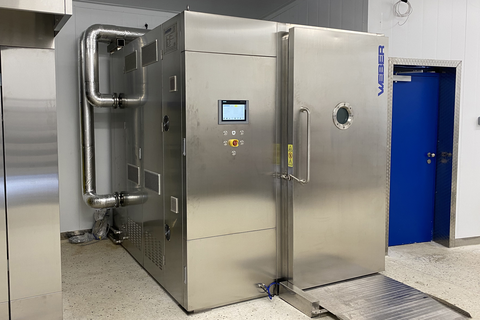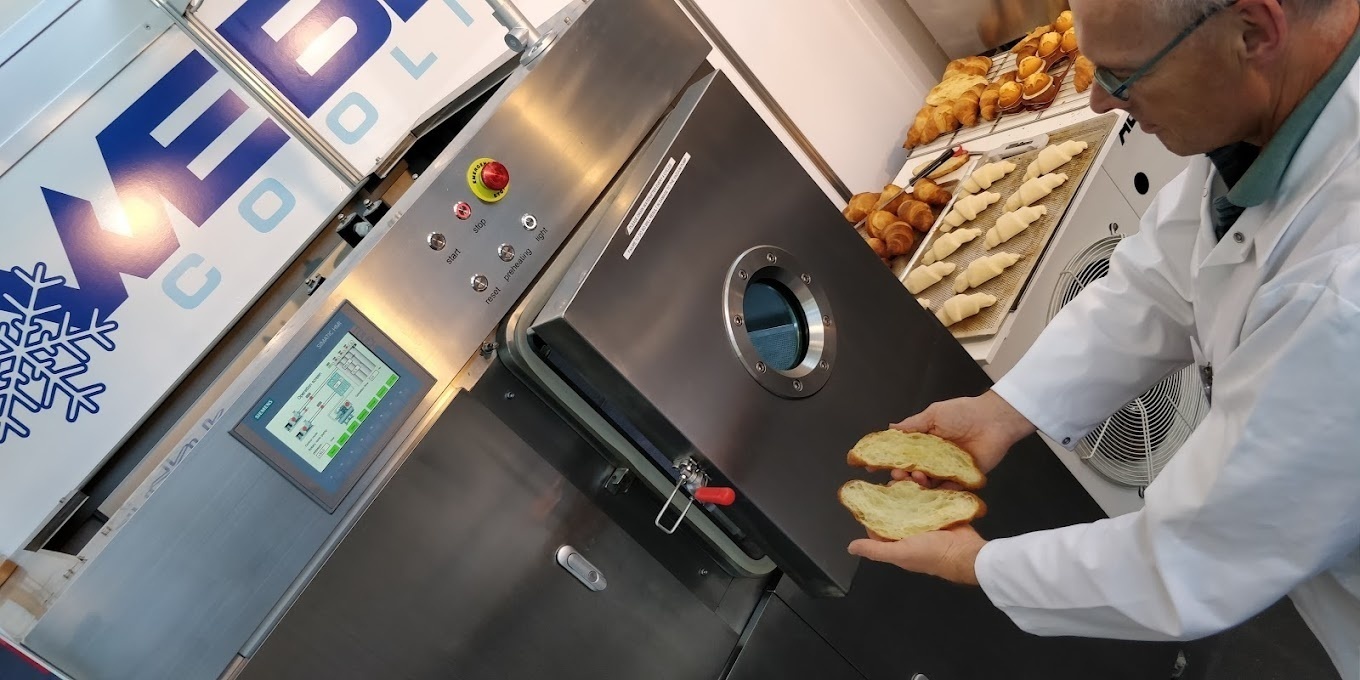Sustainable Practices for Bakeries: Enhancing Sustainability with Vacuum Cooling
Sustainability in bakeries is about meeting current needs without compromising the ability of future generations to meet theirs. This involves implementing strategies that reduce waste, conserve energy, source ingredients responsibly, and minimize water usage.
These efforts contribute to a healthier planet while often providing cost savings and operational efficiencies. Below are some key sustainable practices that bakeries can implement to achieve these goals:
Eco-Friendly Packaging
Switch to Sustainable Materials: Opt for packaging made from recyclable, biodegradable, or compostable materials. Traditional plastic packaging contributes significantly to environmental pollution, so using materials like paper, cardboard, or plant-based plastics can reduce your bakery’s carbon footprint.
Reduce Packaging Waste: Design packaging that uses minimal material without compromising product protection. This not only saves resources but also cuts down on waste.
Reusable Containers: Encourage customers to bring their own containers or offer products in reusable containers that they can return for a discount on future purchases.
Reducing Single-Use Plastics
- Biodegradable Alternatives: Replace single-use plastic items, such as gloves and baking paper, with biodegradable or compostable options. For instance, compostable gloves can break down more quickly in a compost pile compared to traditional plastic gloves.
- Reusable Products: Utilize reusable baking mats, trays, and storage containers to minimize waste and reduce the need for disposable items.
Minimizing Food Waste
- Efficient Inventory Management: Implement systems to monitor and manage inventory effectively to prevent overproduction and waste. Accurate demand forecasting can help ensure that you produce only what you can sell.
- Repurposing Leftovers: Develop recipes that use leftover ingredients or unsold products. For example, day-old bread can be turned into breadcrumbs or croutons.
- Donation Programs: Partner with local charities and food banks to donate unsold products, ensuring they benefit the community rather than going to waste.
Sustainable Ingredient Sourcing
- Local Sourcing: Purchase ingredients from local farmers and producers to reduce transportation emissions and support the local economy. Local ingredients are often fresher and require less energy to transport.
- Organic and Fair Trade: Choose organic ingredients that are grown without harmful pesticides and chemicals, and opt for fair trade products that ensure fair wages and working conditions for farmers.
- Seasonal Ingredients: Use seasonal ingredients to minimize the environmental impact of greenhouse-grown or long-transported foods.
Water Conservation
- Efficient Cleaning Practices: Implement water-saving techniques such as using high-pressure, low-volume spray nozzles for cleaning equipment and workspaces. Dry steam cleaning can also be a more water-efficient alternative.
- Water Recycling: Install systems to capture and recycle water used in production processes for cleaning or irrigation purposes.
- Smart Fixtures: Equip your bakery with water-saving fixtures like low-flow faucets and dual-flush toilets to reduce water usage in restrooms and kitchens.
Energy Efficiency
- Energy-Efficient Appliances: Invest in energy-efficient ovens, mixers, and refrigeration units. Look for appliances with high energy star ratings, which consume less power while maintaining performance.
- Renewable Energy Sources: Consider installing solar panels or purchasing energy from renewable sources. This can significantly reduce your bakery’s carbon footprint and potentially lower energy costs in the long run.
- Lighting Solutions: Use LED lighting, which consumes less energy and lasts longer than traditional incandescent bulbs. Implementing motion sensors in less frequently used areas can further reduce energy consumption.
By integrating these sustainable practices, bakeries can significantly reduce their environmental impact, lower operational costs, and create a healthier environment for both their customers and the planet. Moreover, adopting such practices can enhance a bakery's reputation and attract eco-conscious consumers who value sustainability. For more information on how vacuum cooling technology can further enhance your bakery's sustainability efforts, visit Weber Vacuum Group.
This method offers numerous environmental benefits and aligns well with sustainable practices:
- Energy Savings: Vacuum cooling is highly energy-efficient compared to traditional cooling methods. It rapidly cools baked goods using a fraction of the energy required for conventional cooling systems, thus reducing overall energy consumption.
- Reduced Cooling Time: By drastically shortening the cooling time, vacuum cooling enhances production efficiency and reduces the need for extensive refrigeration, which is typically energy-intensive.
- Improved Product Quality: Vacuum cooling helps maintain the moisture and texture of baked goods, reducing the likelihood of product waste due to spoilage or quality issues.
- Lower Water Usage: Traditional cooling methods often require significant water usage for steam and humidity control. Vacuum cooling, on the other hand, operates with minimal water usage, contributing to overall water conservation efforts.



